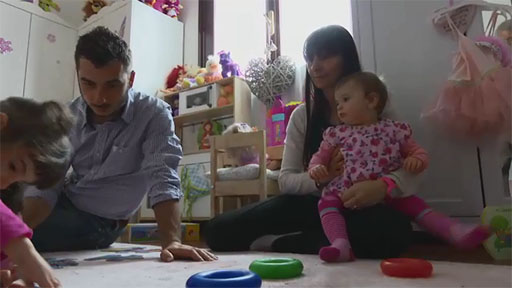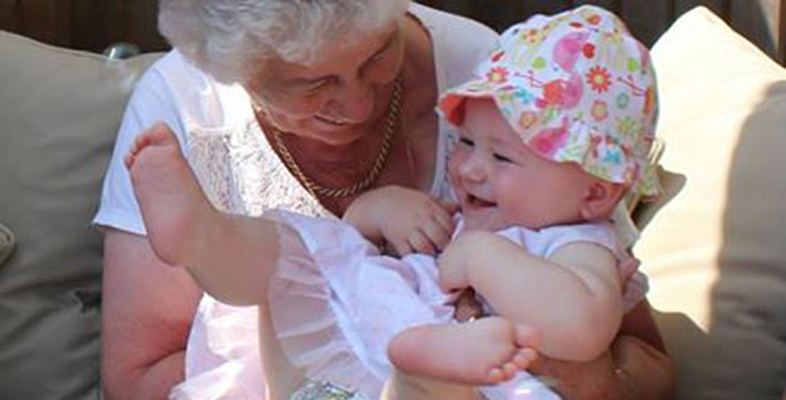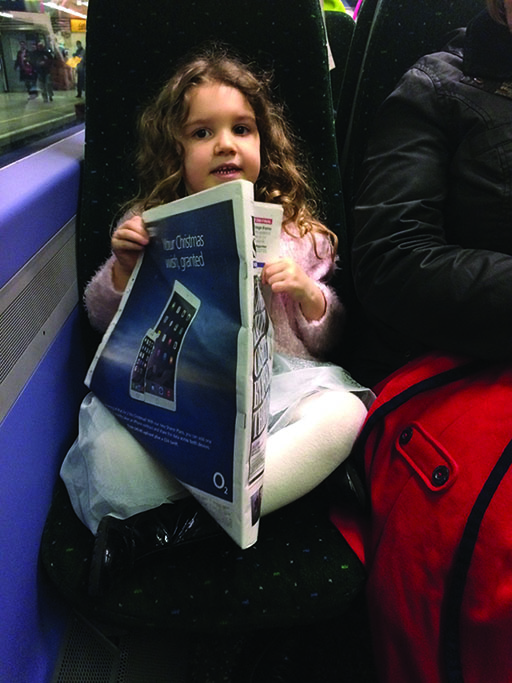2.1 Cerys goes to London
You will see these aspects of companionable learning in this vignette about five-year-old Cerys’s day out with her grandparents.
Example 1: Cerys’ trip to London
Cerys’s grandparents took her to London to visit ‘Big Ben’ as she had often talked about ‘Little Ben’ near where her grandmother works and a ‘Baby Ben’ near where she lives. Cerys helped to buy tickets and deal with the money, and the family talked about their journey to London on the train.
When they were looking towards Big Ben from across the river at the London Eye, Cerys’s grandmother gave her a camera. At first she took photos looking downwards through the criss-cross bars of the London Eye towards the floor below where the people appeared as ‘little dots’. Later, her grandfather took a picture of Cerys with her grandmother in front of Big Ben, indicating the size of the people compared to the monuments and reflecting part of Cerys’s interest in the monuments themselves. But it also introduced her to mathematical concepts such as proportion, perspective and looking from different angles – concepts that are valuable frameworks for developing problem-solving skills and empathy.
They went to a restaurant in London’s China Town, where Cerys chose noodles, like her grandparents. When the owner asked the family what they would like to drink, her grandparents asked for Chinese tea. Cerys replied, ‘I would like some Chinese lemonade, please.’
On the way home, a passenger had left a newspaper on the seat of the underground tube train. Cerys snapped it up and sat in the same pose as the man who had left it. She moved her head from side to side, reading the paper as the train took them home.
Cerys’s grandparents facilitated her place as a decision maker by following her lead, looking at things of interest from her perspective, adding to Cerys’s sense of wonder. The message that Cerys received from her grandparents was that they thought she was worth listening to and was a competent person in her own right. Cerys actively drew on social and cultural cues or prompts from her grandparents to help her know what to do, such as taking photos, counting money and ordering a drink. They moved between facilitating opportunities for Cerys’s explorations of Big Ben and the ‘little dots’, participation (taking photos, ordering herself a drink) and directly intervening (showing her things, role-modelling and making conversation). She was allowed time and space in an unhurried day, and she took advantage of this by exploring. She was able therefore to bring her own purpose to the activities, formulating her own questions and different ways of understanding.
Cerys’s grandparents provided a secure boundary through an authoritative, gentle but firm approach. Through their undivided attention, she enjoyed a strong sense of belonging. By using appropriate prompts and vocabulary (‘look over there’, ‘opposite’, ‘Big Ben’, ‘up’, ‘down’, ‘across’), Cerys’s grandparents shared communication as they learned together from the day’s activities. Cerys learned more about her grandparents’ love, empathy and playfulness, and they learned similar things about her. Their day of companionable learning together added to everyone’s sense of well-being.
You can see from this snapshot that learning within the family can be a rich and sophisticated experience for children. In contrast, more formal learning situations, such as in school, can be associated with a seeking ‘the answer’ and a ‘hurry-along’ curriculum (Dadds, 2002). The learning that children experience in such family situations is holistic. It does not focus on particular subjects or skills, as they are learning about many things at the same time.
Activity 2
In the following film clip you will meet Viola, a girl who lives in Pistoia, a city in northern Italy. You will hear her parents talking about her day and what this involves, with a focus on her activities outside her time at the nursery she attends regularly. Watch the video below, and as you watch, build up a picture of all of Viola’s learning experiences with her family. Draw on both the action that you see and what her parents say about her daily routine.
You may find it useful to watch the clip two or three times, so as to get a ‘feel’ for the film and what is said first, before you go on to review it in greater detail later.

Transcript
List each of Viola’s learning experiences in the box below.
When you have finished watching the clip and noting your observations, look at your completed list, and write a couple of sentences in the box below, about what strikes you about Viola’s learning experiences with her family.
Comment
Observations from the clip
You probably noted that, outside nursery, Viola is involved in a wide range of learning experiences both with her parents and her grandparents. These activities involve play both indoors and outdoors, as well as interactions with different people outside the family group – for example, at her dance class. You also get a sense that engaging in these learning activities is part of the family routine, part of their unique family culture. The experiences that Viola’s parents talk about are also a clear example of ‘companionable learning’. Viola experiences a sense of belonging from the attention of those closest to her. They share communication between each other, and there is a concern for Viola’s well-being (snacks and naps are built into her routine at home). Finally, her parents recognise her as a decision maker. They describe the choices she makes when they play with her in her bedroom, and we see her deciding to dress up as a ballerina at the end of the clip.
Key points
- In family situations, learning can be seen as a shared, companionable activity.
- Companionable learning promotes decision making, belonging, communication and well-being.


